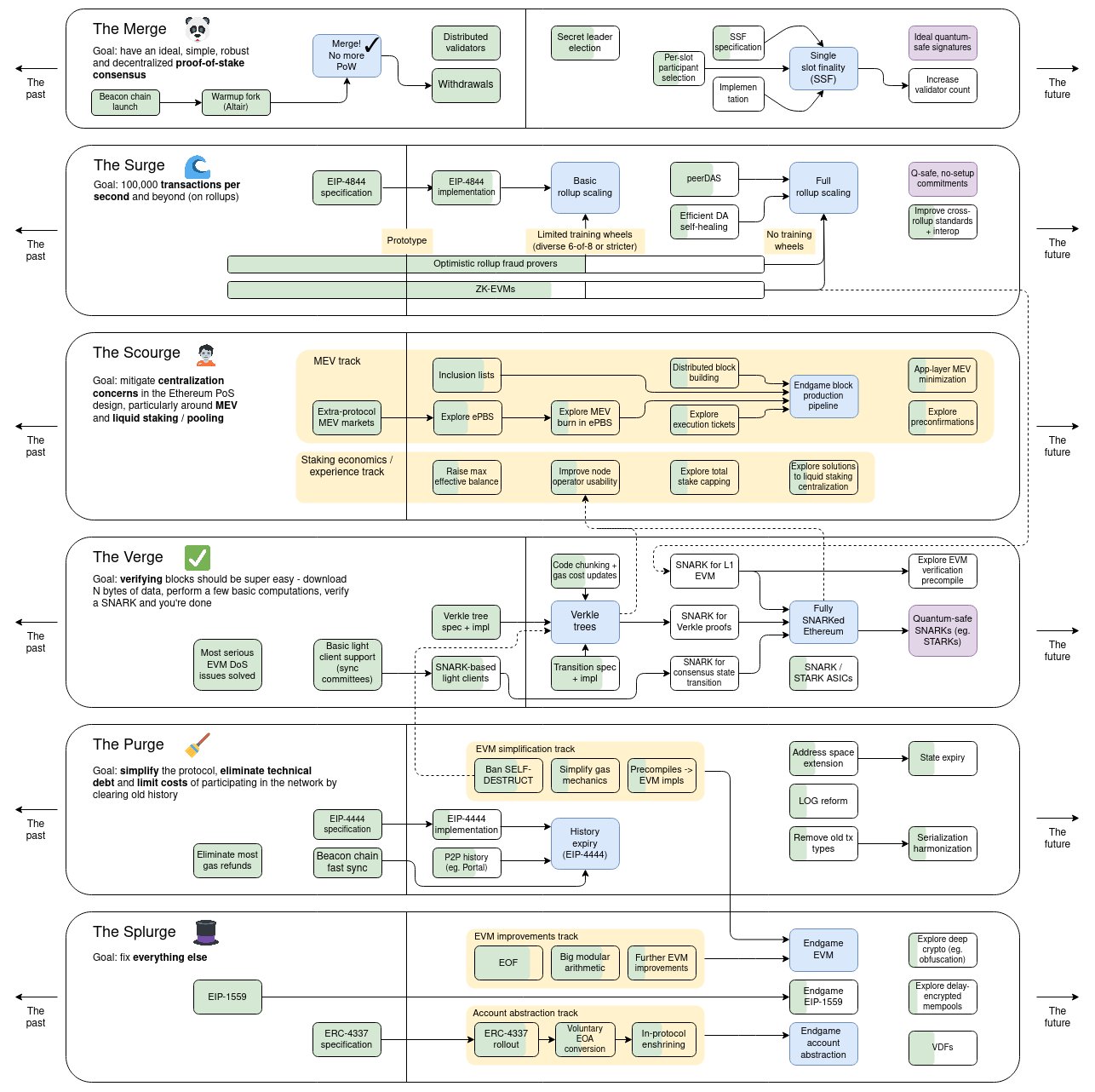Coinspeaker
From the Merge to the Splurge: Look at Vitalik Buterin’s 2024 Ethereum Roadmap
We’ve all had time to digest Ethereum co-founder Vitalik Buterin’s roadmap for the network, published in a series of posts on X on the second-last day of 2024. As has become tradition, the computer programmer attached a series of detailed diagrams to each tweet in the lengthy thread, revealing the blockchain’s priorities for the next 12 months. Suffice to say the plans have elicited a reaction from Crypto Twitter – there have been almost 2,000 replies and counting.
So just what does Buterin’s vision look like, and what are the core priorities moving forward?
Continuity with Some Important Changes
At the start of his thread, Buterin drew comparisons to the roadmap he’d shared a year before, noting that the two were “quite similar”. As Ethereum’s technical path forward continues to solidify, he added that “there are relatively few changes”. And then he highlighted the important ones.
The diagrams were indeed similar: six stages charting the Merge (strong PoS consensus), the Surge (100k tps across Ethereum and L2s), the Scourge (risk management around MEV and liquid pooling), the Verge (easy verification), the Purge (protocol simplification), and the Splurge (network-wide improvements). Continuity was very much emphasized with mostly minor adjustments to the existing blueprint laying out Ethereum’s evolution.
Needless to say, the goal of the modest changes coupled with the ones Buterin felt the need to explain in more detail is to ensure a more efficient, secure and scalable Ethereum: a lighter, simpler beast that “makes Ethereum cypherpunk again”.
Among the important changes cited in the thread were single slot finality (SSF), which Buterin described as “the easiest path to resolving a lot of the Ethereum PoS design’s current weaknesses”. In essence, SSF allows blocks to be finalized within the same slot they were confirmed, meaning blocks are able to finalize in less than the current 15 minutes.
Buterin also touched on the progress of rollup scaling, the need to fight economic centralization (a common criticism of Proof-of-Stake systems), progress with Verkle tress, and the shrinking of state expiry.
Reviving the Cypherpunk Spirit
Although the technical direction of Ethereum remains largely unchanged, Buterin’s stated commitment to reviving the cypherpunk spirit of the chain’s early days speaks to a passion for privacy. The diagrams accompanying his tweets referenced account abstraction, “deep crypto (e.g. obfuscation)”, delay-encrypted mempools, and SNARK-based light clients.
Distributed Validator Technology (DVT), which is intended to spread out the tasks as well as the risks of the validation process in Ethereum’s PoS consensus, was included in the Merge section of the roadmap. This, too, concerns privacy as it distributes the core responsibilities of a validator among multiple entities while also lowering the risk of centralization.
Commenting on Buterin’s roadmap, Alon Murdoch, Founder of the SSV core team, said that DVT would make “the individual validator much harder to compromise. Considering ‘very large’ operators will exist, just by the nature of how staking works, it’s better if they are part of a DVT cluster than running a few 4K ETH validators on their own”.
On the same developer thread, Leona Hioki, a system architect at the zkRollup protocol Intmax, agreed with the importance of DVT in Ethereum, saying:
“Adopting DVT with switching pools is the easiest way to support solo stakers and to minimize the block size. It actually leaves almost no problem. The pool managers can not use the stake to perform a 51% attack if and only if the withdrawal keys can stop it and the pool cannot tell whether or not the withdrawal key holders are online to keep watching the behaviors of the pool.”
Buterin’s comments about making Ethereum cypherpunk again may have elicited sneers from some quarters, but the latest roadmap certainly drove home Vitalik’s point: Ethereum needs to be a network characterized by decentralization, privacy and open participation. If there was a take-home message to the roadmap, it might be that innovation alone isn’t enough: the route from the Merge to the Splurge needs to embrace Ethereum’s roots.
Perhaps we’ll know whether Ethereum is making good on its promises by the time Buterin’s 2025 update rolls around.
From the Merge to the Splurge: Look at Vitalik Buterin’s 2024 Ethereum Roadmap





